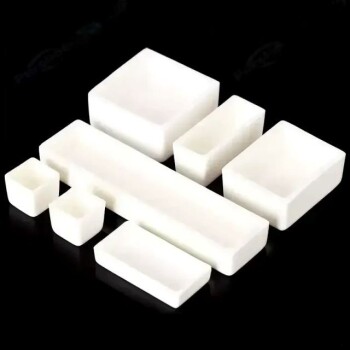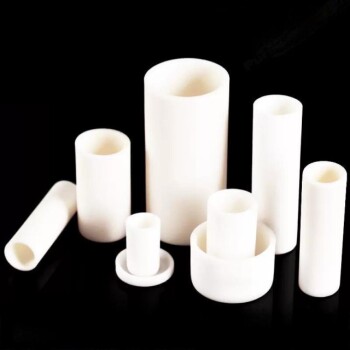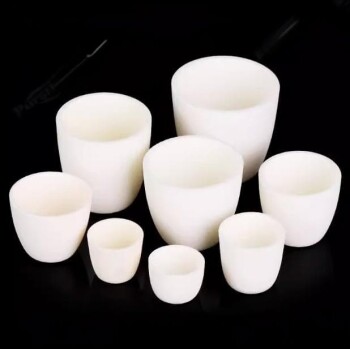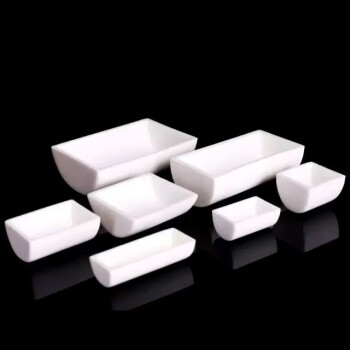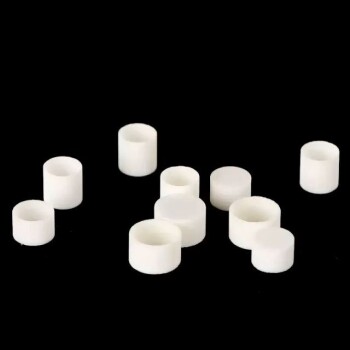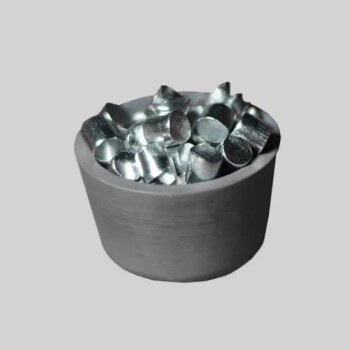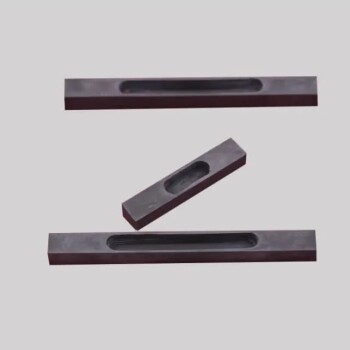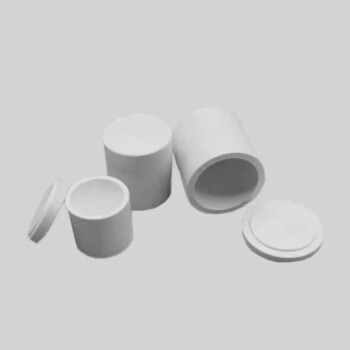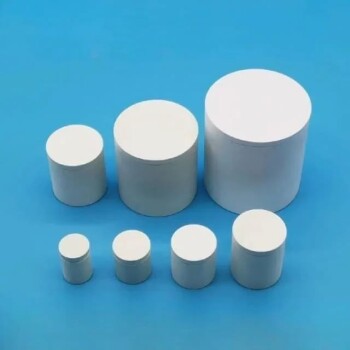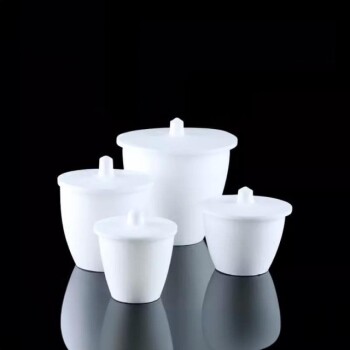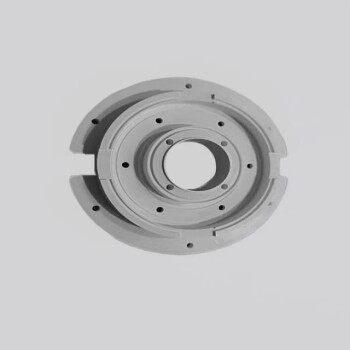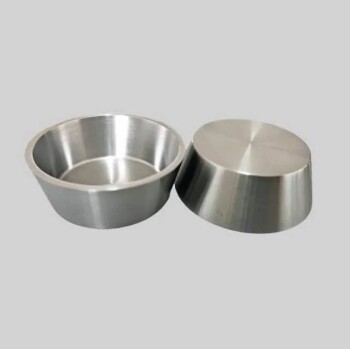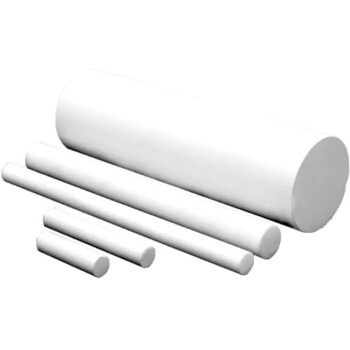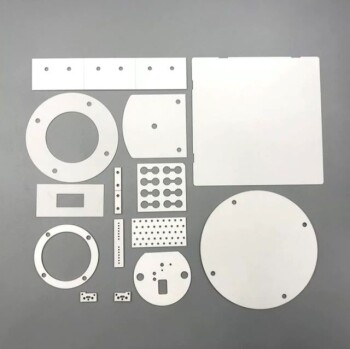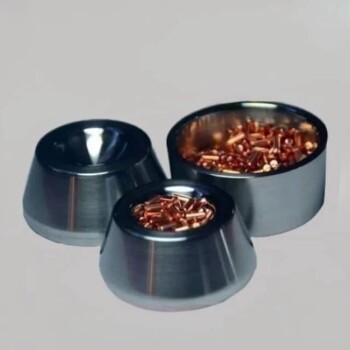Overview of Ceramic Crucibles
Historical and Material Development
Historically, crucibles were initially crafted from humble materials such as clay. These early crucibles were rudimentary, yet they laid the foundation for more sophisticated designs. One of the earliest uses of platinum was in the fabrication of crucibles, showcasing the transition from basic materials to more durable and high-temperature resistant substances.
As preparation techniques advanced, the range of materials suitable for crucible production expanded dramatically. Today, crucibles can be made from virtually any material capable of withstanding high temperatures and chemical alterations. This evolution has been driven by the need for crucibles that offer superior performance in various industrial applications.
| Material Type | Early Use | Modern Applications |
|---|---|---|
| Clay | Initial crucibles | Historical interest, limited industrial use |
| Platinum | Early crucible use | High-end applications, precious metals |
| Quartz Ceramic | N/A | Glass, metallurgy, electronics |
| Corundum (Alumina) | N/A | High-temperature, chemical resistance |
| Boron Nitride | N/A | Heat dissipation, high-temperature insulation |
| Zirconia | N/A | Platinum group metals, high melting points |
| Yttrium Oxide | N/A | Titanium alloys, oxygen-sensitive processes |
The development of crucibles from clay to advanced ceramics like boron nitride and yttrium oxide underscores the technological advancements in material science. Each material brings unique properties that cater to specific industrial needs, ensuring the purity and integrity of the materials being processed. This progression not only reflects the evolution of manufacturing techniques but also the growing demands of modern industries.
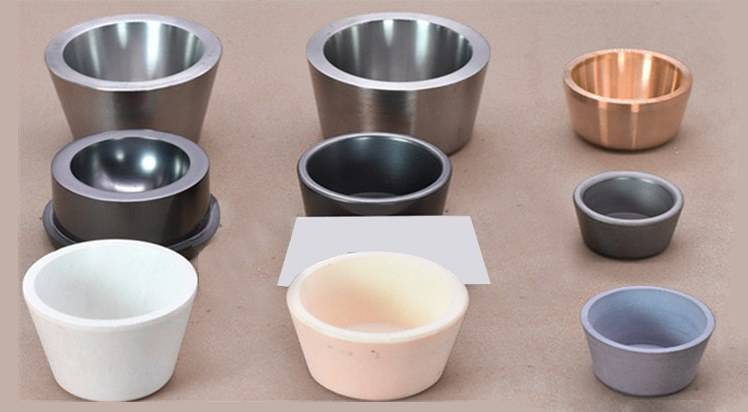
Types and Specifications
Ceramic crucibles come in a diverse array of types, models, and specifications, each tailored to meet specific requirements in various industrial applications. The selection process is not arbitrary but rather guided by the need to ensure the highest purity of the melted materials. This diversity allows for precise matching of crucible properties to the demands of different melting processes.
For instance, Quartz Ceramic Crucibles are renowned for their high purity fused silica content (≥99.9%), offering excellent thermal shock stability and chemical resistance. These crucibles are commonly used in the glass deep-processing industry, metallurgy, electronics, and aerospace due to their fine structure and low thermal conductivity.
In contrast, Corundum (Alumina) Crucibles are characterized by their high alumina content (above 95%) and are known for their strength, resistance to fusion, and ability to withstand rapid temperature changes. They are particularly suited for melting samples with weak alkaline substances like anhydrous Na2CO3 but are not recommended for strong alkaline or acidic substances.
Boron Nitride Crucibles, typically made from hexagonal boron nitride (P-BN), excel in heat resistance and thermal stability, making them ideal for high-temperature insulation and heat dissipation applications.
Zirconia Crucibles stand out with their exceptionally high melting point (2700°C), making them one of the best refractory materials available. They are particularly useful for melting platinum group metals and their alloys due to their resistance to slag reactions.
Lastly, Yttrium Oxide Crucibles are high-performance ceramics with exceptional heat resistance and corrosion resistance. Their high melting point (greater than 2400°C) and stability against reactive metals like titanium make them suitable for melting processes involving titanium and its alloys.
This variety ensures that regardless of the specific requirements of the melting process—whether it be high purity, thermal stability, or resistance to chemical reactions—there is a ceramic crucible designed to meet those needs.
Specific Types of Ceramic Crucibles
Quartz Ceramic Crucible
The quartz ceramic crucible, also known as the high purity fused silica ceramic crucible, is distinguished by its exceptional purity, with a silica content of 99.9% or higher. This crucible is meticulously crafted from high purity fused silica, which imparts it with a fine microstructure, low thermal conductivity, and a remarkably low coefficient of thermal expansion. These attributes collectively contribute to its superior thermal shock stability, making it highly resilient to sudden temperature changes.
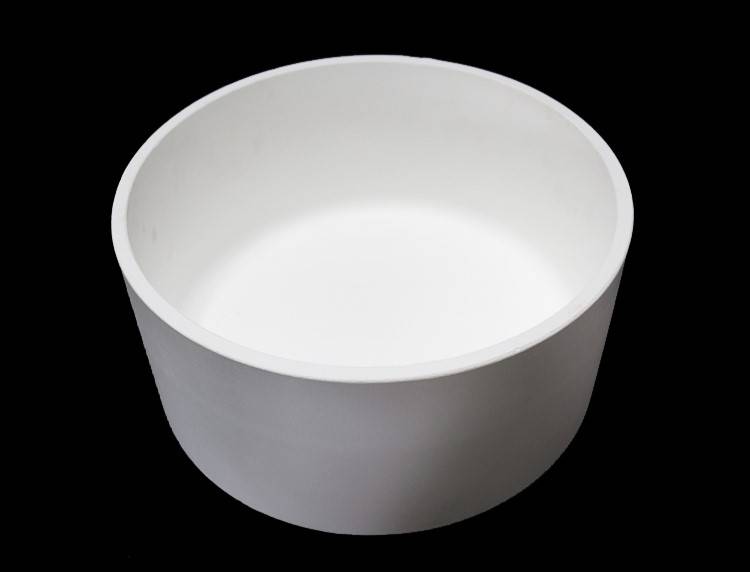
In addition to its thermal properties, the quartz ceramic crucible boasts excellent electrical characteristics and robust chemical resistance. These features enable it to withstand a variety of harsh environments, making it an ideal choice for a broad spectrum of industrial applications. The quartz ceramic crucible is extensively utilized in the glass deep-processing industry, metallurgical sector, electronics field, chemical industry, aerospace, and other advanced technological domains.
The geometric forms of quartz ceramic crucibles are typically either square or cylindrical, which not only facilitates handling and storage but also accommodates a wide range of processing needs. This versatility ensures that the quartz ceramic crucible remains a cornerstone in high-purity material processing, where precision and reliability are paramount.
Corundum (Alumina) Crucible
Corundum crucibles, scientifically known as alumina crucibles, are commonly referred to as such when they contain more than 95% alumina (Al2O3). These crucibles are renowned for their exceptional strength and resistance to fusion, high temperatures, acids, alkalis, rapid temperature changes, and chemical corrosion. They are particularly suitable for melting samples using weak alkaline substances like anhydrous sodium carbonate (Na2CO3) as a melting agent. However, they are not recommended for use with strong alkaline substances such as sodium peroxide (Na2O2) or sodium hydroxide (NaOH), nor with acidic substances.
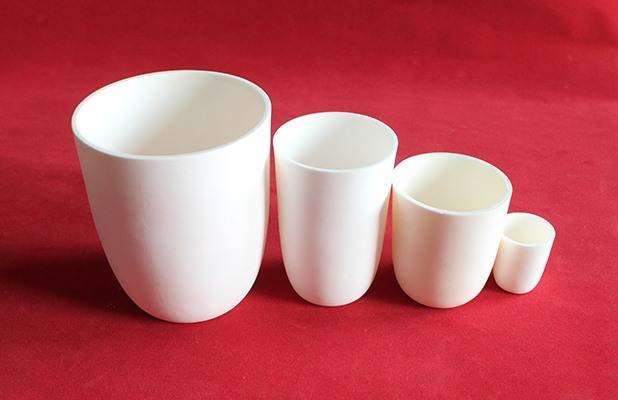
Alumina crucibles with a purity of 99.70% exhibit excellent high-temperature insulation and mechanical strength in redox atmospheres ranging from 1650℃ to 1700℃. They can withstand temperatures up to 1800℃ for short durations. These crucibles are available in a wide variety of sizes and shapes to accommodate different application conditions.
For instance, a high-purity alumina crucible with over 99.6% Al2O3 content and a 1000 ml capacity is inert to hydrogen, carbon, and refractory metals. It can be used at operating temperatures up to 1750°C in both oxidizing and reducing atmospheres. This makes them ideal for producing ferromagnetic materials like stainless steel and nickel alloys, which become more ductile when melted and cooled slowly. The name "alumina" is derived from aluminum oxide, an oxide of aluminum with the chemical formula Al2O3.
In summary, alumina crucibles are versatile tools in various industrial applications, particularly in high-temperature processes requiring materials with high purity and resistance to chemical and thermal stresses.
Boron Nitride Crucible
Boron nitride crucibles are typically composed of hexagonal boron nitride (P-BN), a material known for its exceptional thermal and electrical properties. P-BN ceramics exhibit superior heat resistance, thermal stability, and thermal conductivity, making them ideal for high-temperature applications. These properties are crucial in environments where thermal shock and high dielectric strength are paramount.
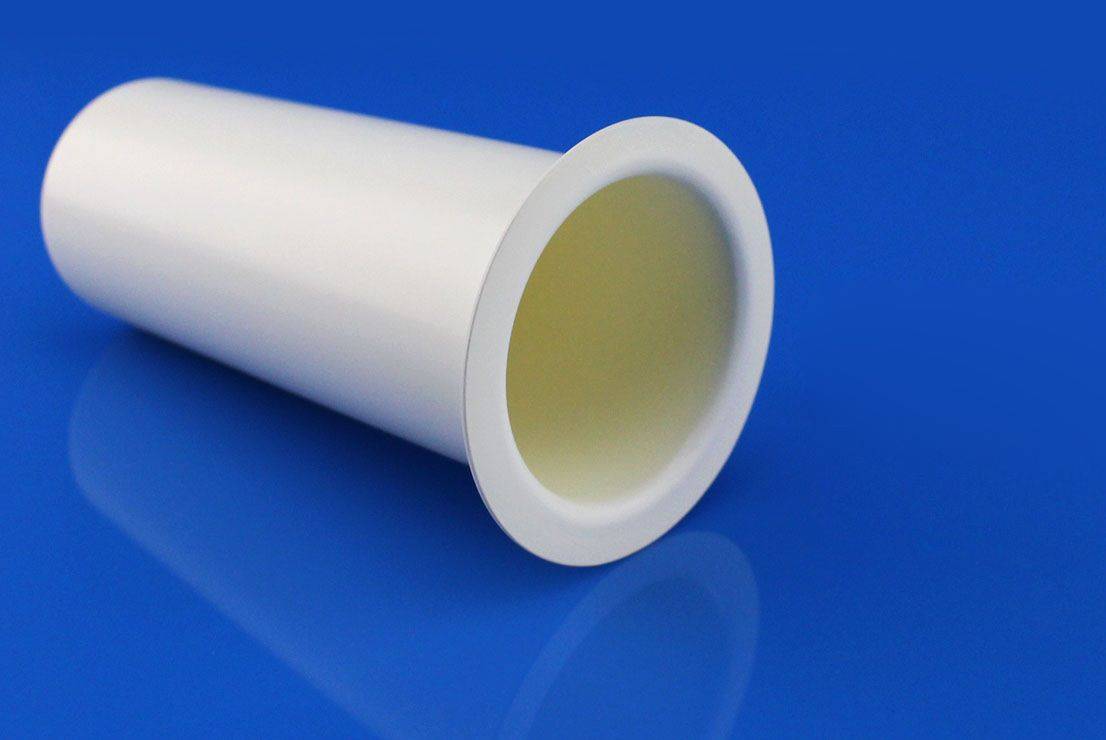
In addition to their thermal characteristics, P-BN crucibles offer excellent corrosion resistance and electrical insulation, which broaden their utility across various industries. For instance, they are frequently employed in crucibles for crystal growth, insulators for high-temperature furnaces, and electric insulators in vacuum systems. The versatility of P-BN crucibles is further highlighted by their use in break rings for horizontal casting machines and feedthroughs for high-voltage equipment.
The operational temperature range of P-BN crucibles is extensive, allowing them to function effectively at approximately 1800 degrees Celsius under vacuum conditions and up to 2100 degrees Celsius under atmospheric protection. This makes them suitable for ultra-high-temperature forging processes. Moreover, P-BN crucibles demonstrate remarkable durability, even under extreme conditions. For example, they can withstand sudden temperature drops from 1500 degrees Celsius without cracking and endure continuous quenching cycles without damage.
| Property | Description |
|---|---|
| Material | Hexagonal Boron Nitride (P-BN) |
| Heat Resistance | Excellent, withstands up to 2100°C under atmospheric protection |
| Thermal Stability | High, maintains structural integrity under thermal shock |
| Thermal Conductivity | High, ideal for heat dissipation |
| Dielectric Strength | High, suitable for electrical insulation |
| Corrosion Resistance | Excellent, resistant to chemical corrosion |
| Applications | Crystal growth, high-temperature furnace insulators, electric insulators |
The unique combination of these properties positions boron nitride crucibles as a preferred choice in industries requiring robust, high-performance materials capable of withstanding extreme conditions.
Zirconia Crucible
Zirconia crucibles are renowned for their exceptional thermal properties, particularly their high melting point, which reaches an impressive 2700°C. This makes zirconia one of the most superior refractory materials available, capable of withstanding extreme temperatures that other materials cannot. The unique chemical stability of zirconia allows it to interact minimally with slag and other reactive substances, which is crucial for maintaining the purity of the materials being melted.

Crucibles made from zirconium oxide materials are particularly adept at handling platinum group metals, such as platinum, palladium, ruthenium, and rhodium, as well as their alloys. These metals are known for their high melting points and reactivity, but zirconia's inert nature ensures that these precious metals can be melted without contamination. This makes zirconia crucibles an indispensable tool in industries that require the precise melting and processing of these valuable elements.
| Property | Zirconia Crucible |
|---|---|
| Melting Point | 2700°C |
| Refractory Material | Yes |
| Reactivity with Slag | Low |
| Suitable Metals | Pt, Pd, Ru, Rh, etc. |
The ability of zirconia crucibles to maintain their structural integrity under such extreme conditions is a testament to their durability and reliability. This attribute, combined with their resistance to chemical reactions, positions zirconia crucibles as a top choice in high-temperature applications across various industries, including metallurgy, electronics, and aerospace.
Yttrium Oxide Crucible
Yttrium oxide (Y2O3) ceramic stands out as a high-performance material renowned for its exceptional heat resistance, corrosion resistance, and high-temperature stability. With a melting point exceeding 2400°C, Y2O3 exhibits an impressive resistance to reactions with highly reactive metals such as titanium (Ti), aluminum (Al), hafnium (Hf), and niobium (Nb) even under extreme temperatures.
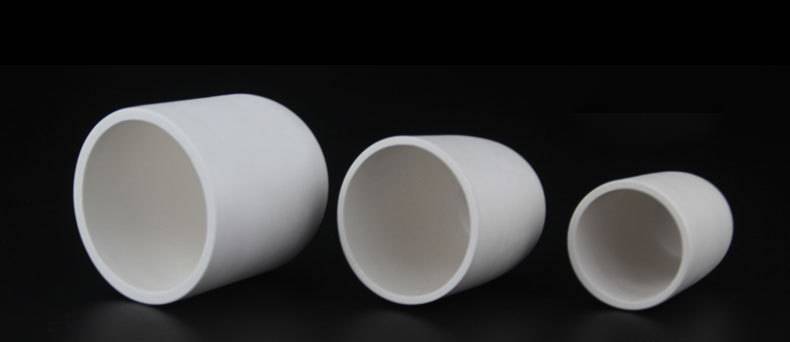
Crucibles composed primarily of high-purity Y2O3 are particularly promising for applications involving the melting of titanium and its alloys. These crucibles are also ideal for processes where oxygen sensitivity is a critical factor. The inert nature of Y2O3 at elevated temperatures ensures that it does not introduce unwanted impurities or react with the materials being processed, making it a reliable choice for maintaining the integrity of the melt.
In summary, yttrium oxide crucibles offer a robust solution for high-temperature applications, particularly those involving reactive or oxygen-sensitive materials, thanks to their superior thermal and chemical stability.
Related Products
- Engineering Advanced Fine Alumina Al2O3 Ceramic Crucible for Laboratory Muffle Furnace
- Engineering Advanced Fine Ceramics Alumina Al2O3 Crucible With Lid Cylindrical Laboratory Crucible
- Arc-Shaped Alumina Ceramic Crucible High Temperature Resistant for Engineering Advanced Fine Ceramics
- Alumina Al2O3 Ceramic Crucible Semicircle Boat with Lid for Engineering Advanced Fine Ceramics
- Engineering Advanced Fine Ceramics Alumina Crucibles (Al2O3) for Thermal Analysis TGA DTA
Related Articles
- Comprehensive Guide to Atmosphere Furnaces: Types, Applications, and Benefits
- Substances Suitable for Calcination in a High-Temperature Muffle Furnace
- Advantages of Mullite Fiber Lining for High-Temperature Furnaces
- Vacuum Induction Melting Furnace vs Arc Melting Furnace: Choosing the Right Equipment for Your Process
- Alumina Crucibles in Precision Casting

